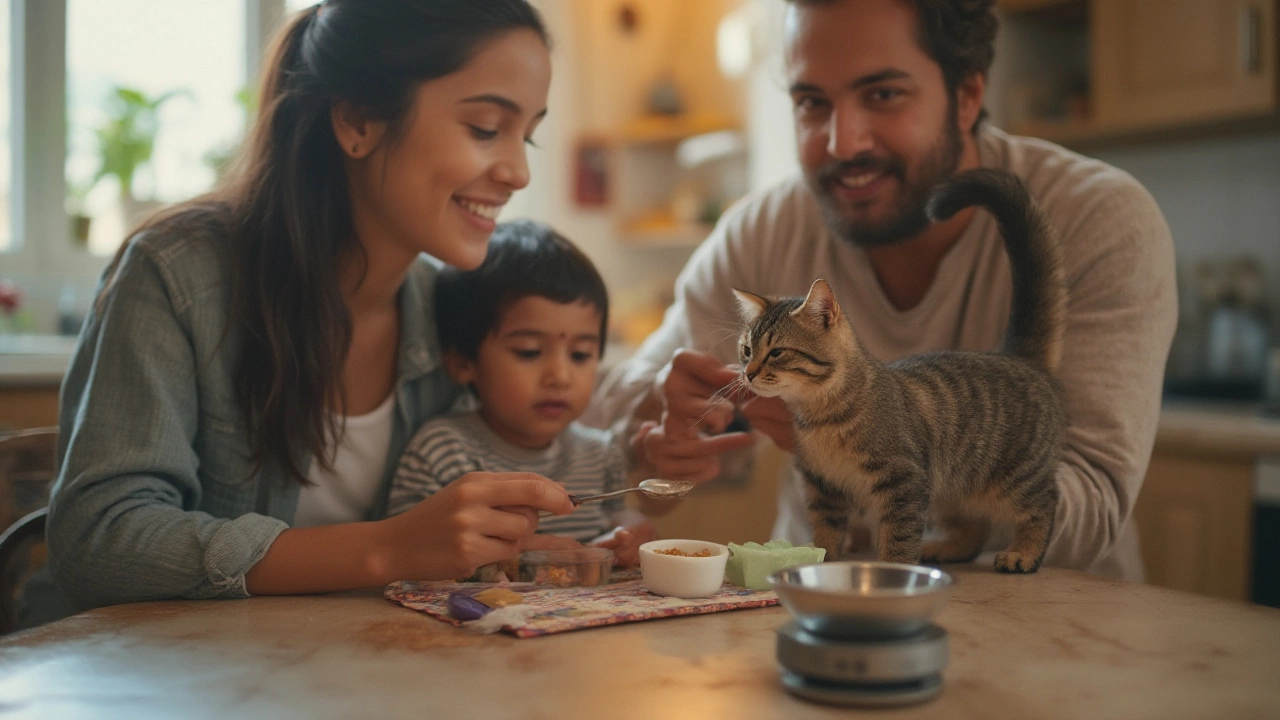Feline Diet: What Every Cat Owner Should Know
Feeding a cat isn’t just about filling a bowl. Cats have unique nutritional needs that change with age, health, and activity level. Getting the basics right can boost their coat shine, keep their weight in check, and reduce vet visits. Below you’ll find the most useful, down‑to‑earth advice on choosing food, setting a schedule, and avoiding common mistakes.
Dry Food vs Wet Food: Pros and Cons
Dry kibble is convenient and cheap. It stores well, doesn’t spoil quickly, and can help keep teeth clean through its crunchy texture. However, dry food is low in moisture, and many cats don’t drink enough water to compensate. Low water intake can lead to urinary issues, especially in older cats.
Wet food, on the other hand, packs up to 80% moisture. That extra water helps keep kidneys and bladder healthy. Wet meals also tend to be more aromatic, making picky eaters more likely to finish their bowl. The downside is the higher price and the need to refrigerate leftovers.
Most vets recommend a mixed approach: serve a base of high‑quality dry kibble for dental benefit and cost efficiency, then add a portion of wet food at each meal for hydration and extra protein. Look for products with real meat listed first, minimal fillers, and no artificial colors or flavors.
Feeding Schedules and Tips
Adult cats thrive on two meals a day, spaced about 12 hours apart. This mimics their natural hunting pattern and helps regulate blood sugar. Kittens need more frequent meals—four to six small portions—because they burn energy fast and grow rapidly.
Measure portions according to the brand’s feeding guide, then adjust based on your cat’s weight and activity. If your cat starts gaining a few pounds, cut the kibble by 10% and add an extra spoon of wet food. Conversely, a skinny cat may need a modest calorie boost or a higher‑protein wet formula.
Never free‑feed (leave food out all day) unless your cat is a senior with a medical condition that requires constant access. Free‑feeding can lead to overeating, obesity, and makes it harder to notice a sudden drop in appetite—a key warning sign of illness.
Always provide fresh water alongside dry food. A water fountain can encourage cats to drink more because the moving water feels more natural. Replace the water at least once a day to keep it clean and appealing.
Watch for signs that a specific food isn’t working: vomiting, diarrhea, hairballs, or a dull coat. If you notice any of these, switch to a limited‑ingredient diet and discuss the change with your vet.
In short, a balanced feline diet is about quality ingredients, proper moisture, and a consistent feeding routine. Mix wet and dry foods, stick to measured portions, and keep water fresh. Do a quick weight check every month and adjust as needed. With these straightforward steps, your cat will stay lively, glossy‑coated, and ready for the next adventure—whether that’s napping in a sunspot or chasing a laser pointer.

How Much Wet Food Does a 10 lb Cat Really Need? Daily Feeding Tips & Guide
Discover how much wet food a 10 lb cat needs daily, tips on portion control, and why the right amount matters for your feline’s health.
read more
Cat Food Additions: Should You Mix Anything With Dry Food?
Explore whether mixing anything with your cat's dry food is a smart move. Get facts, tips, and real advice on boosting your cat's nutrition safely.
read more

